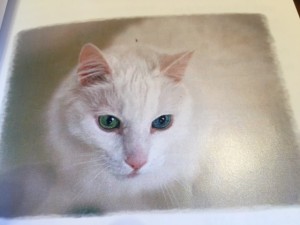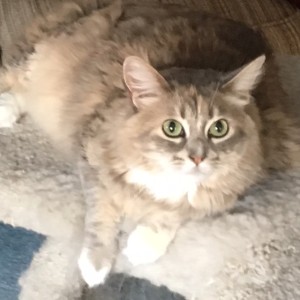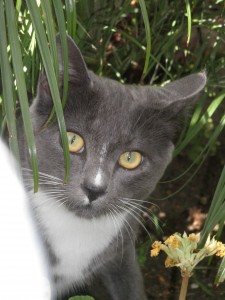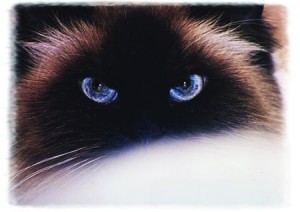 What color is your cat? You may think you know—but you could be wrong.
What color is your cat? You may think you know—but you could be wrong.
Do you know the most common cat colors? You might think it’s black because you see a lot of black cats in your neighborhood and at local shelters. Or you notice more bi-color cats. Did you know there are only a handful of common cat colors or styles of color for cats? They are: tabbies, solids and smokes, torties, patched tabbies and calicos, pointed cats, and cats with white markings (also known as bi-color cats).
Tabby cats (or tiger cats) are striped. Evidently all tabbies have an M on their forehead.  The tabby patterns are thought to be the original color of domesticated cats.
The tabby patterns are thought to be the original color of domesticated cats.
There are four different tabby patterns, mackerel, classic (or blotched), spotted, and ticked (also known as an Abyssinian tabby). But tabbies come in different colors, brown, red, cream, silver, and blue/gray.
Solid or smoke cats are the same color all over—black, blue (gray), white. When the roots of the cat’s fur is white, the color is known as smoke. There are no solid red or cream cats.

Smokey, AKA the Klepto Cat
This is something I didn’t know—maybe you didn’t either. A cat with just white paws is “mitted.” The white spot on a cat’s chest is called a “locket.” A cat with white belly spots has
“buttons.” A “bi-color” is pretty much half white. Ever heard of a “van”? This cat is white with a color patch on the head and tail. A “harlequin” is mostly white with several large patches of color.
What is a “jellicle cat”? A black and white cat. And we all know that a “tuxedo cat” is black and white and looks like he’s wearing a tuxedo.
When it comes to torties and calicos, the

Daisy
descriptions become more complex. Here’s a link to learn more about these interesting color designations. http://www.fanciers.com/other-faqs/colors.html
Of course there is also the pointed (Siamese) pattern. This means dark “points” on the
cat’s face, paws, and tail. You see points in the Siamese, Himalayan, and some rag dolls and also non-breed cats. The colors vary from dark brown (“seal point”) to reds, grays (blues) and include tabby points and tortie points.

Katie
This, I thought was fascinating—pointed cats always have blue eyes. White cats and cats with a lot of white markings can have blue, green, gold, copper or odd-eyes (one blue and one green or gold eye). The most common eye color for cats is greenish-yellow to gold.
Now, go take a close look at your cat and see if you can more accurately determine her color. Is she really black or is she smoke? I was told that Lily is a dilute tabby, but this report says that only the blue patched torbies or tabbies are consider dilute tabbies. Now I’m not sure of Lily’s color.
I have a friend who says, “I don’t know what color Lily is.” She says that every picture I send of Lily makes Lily look a different color.
Did this report change your mind about your cat’s color?





